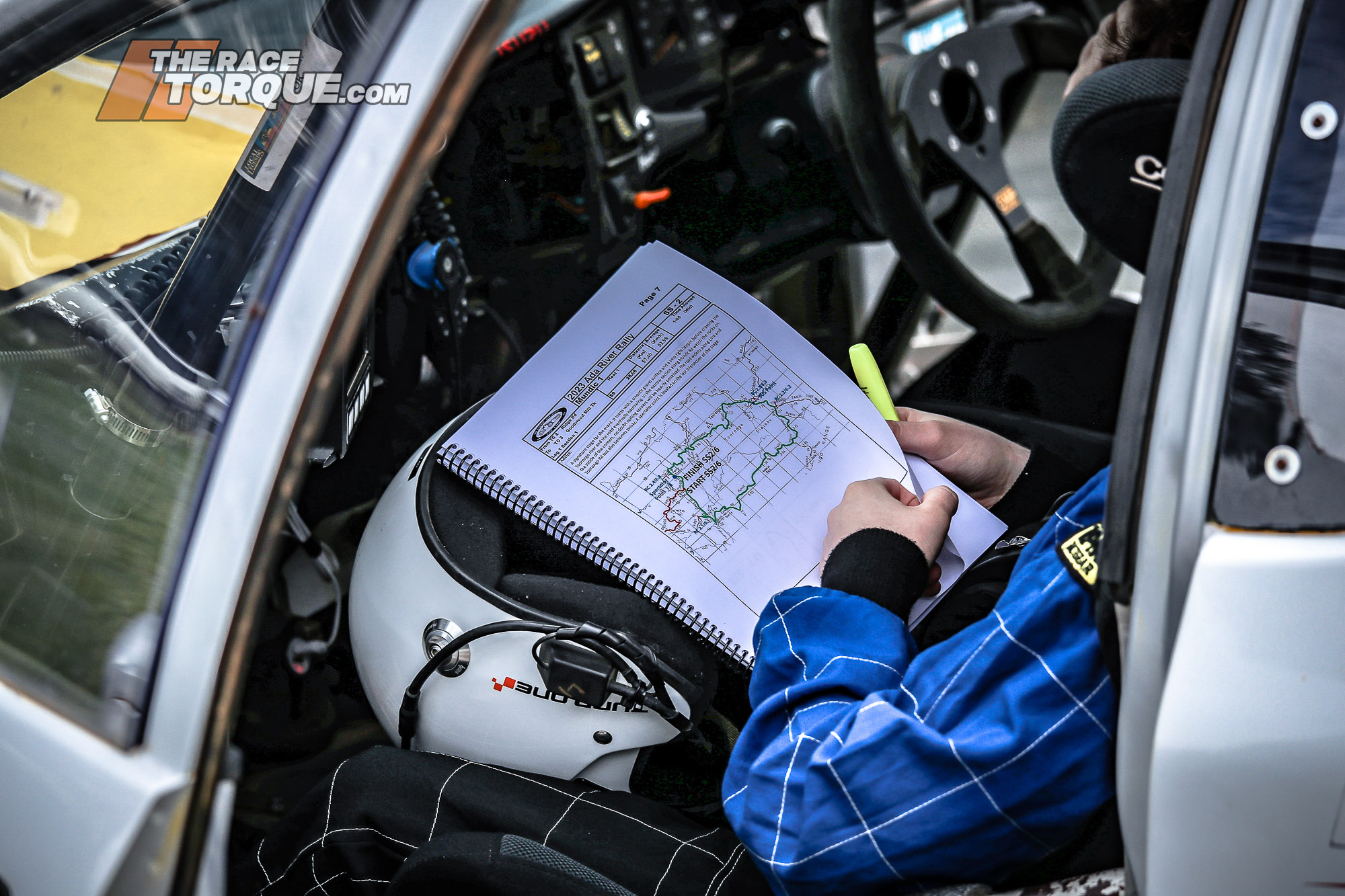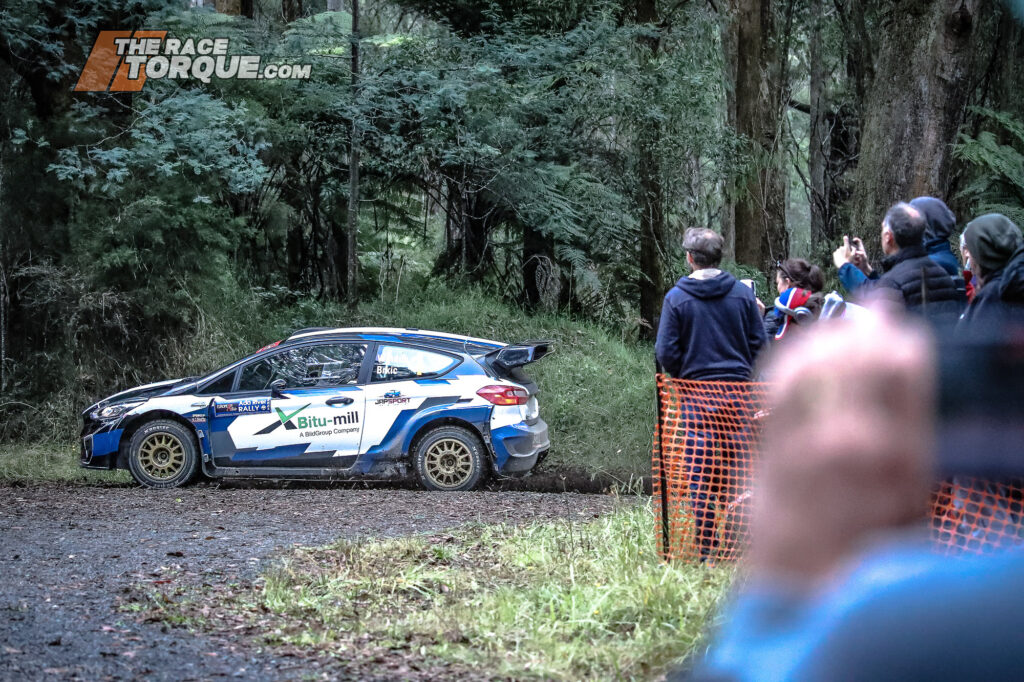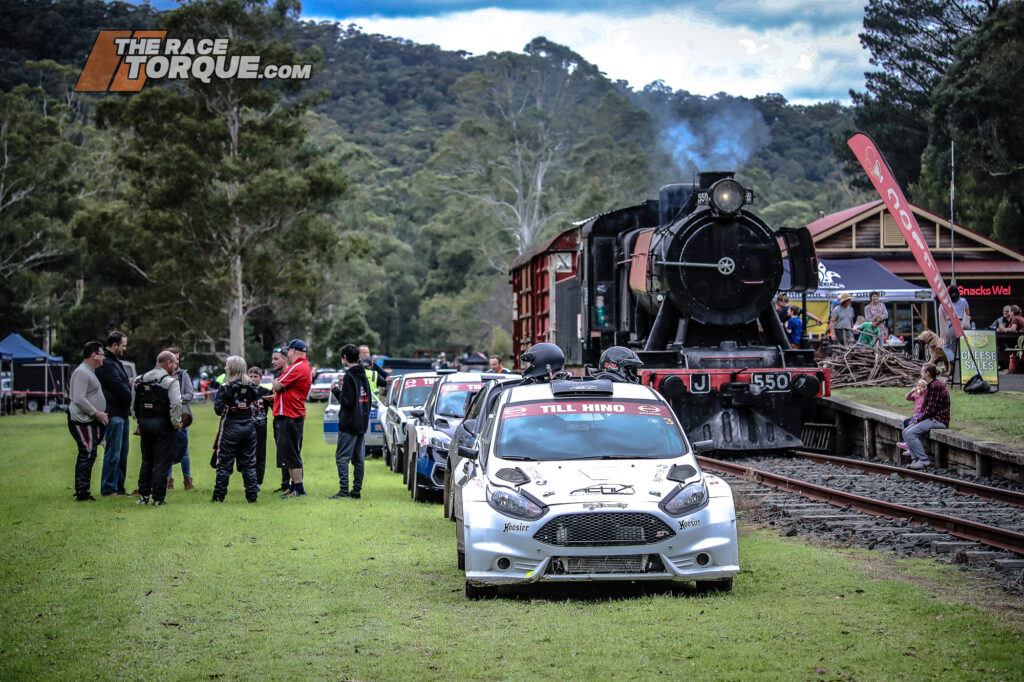12 Traits of Highly Effective Rally Co-Drivers

So, you want to be a rally co-driver – but where do you start?
The Race Torque recently attended a rally co-driver forum as hosted by the Pakenham Auto Club, with presenters Rick Hood, Adam Wright and Martin Warneke providing a brilliant insight into the sport.
There’s a lot that goes on behind the scenes preparing for an event, with the co-driver typically at the heart of a well-functioning outfit.
This story merely outlines some high-level points to consider – there are a lot of intricate details for each event type – but fortunately, there is a lot of good quality help out there if you want to learn the ropes.
1. Don’t get travel sick
- Before you embark on your co-driving career, figure out if you can ride shotgun on a rough-as-guts road, with your eyes buried in a book, deciphering directions thick and fast. Take a car and a mate out to a winding country road and give it a go!
- There are obviously remedies available that can protect you against motion sickness, good old ginger is handy, while diet on rally days is also important.
2. Know the rally types
- So, you are probably aware of the heroes in the WRC, and while that’s always the dream, there are plenty of different competition types to get your teeth stuck into locally. Below the Australian Rally Championship, there are the various state championships, and below that, there are various club-level, short course, sprint and novice rallies held on any given weekend right around the country.
- From navigational rallies, based on deciphering maps, to route book rallies, which provide co-drivers with a series of tulips and distances between major obstacles. These instructions can be unpacked for a driver’s understanding, although they are essentially driving blind. Finally, there are fully pace noted events that rely on teams developing detailed notes. At lower levels, pace notes are all about keeping safe, but at the top end of town, they are focused on going fast. Ideally, you will start your co-driving journey below full pace noted events, and work your way up.
3. Know your first aid
- While circuit racing is in a very much controlled environment, in rally conditions, if you have an issue, the next help is typically 2min away, with medical intervention some way further, and hospitals are generally not in the near vicinity.
- Therefore, it’s prudent that rally participants be familiar with the various types of first aid that are likely to be required while responding to trauma on the stage or in the bush.
4. Be organised
- Co-drivers are usually the organisational brains behind teams – drivers and service crews.
- Paperwork, logistics, schedules, fuel usage and more fall under their event brief.
- Therefore, it’s important to have every conceivable phone number logged for easy reference, and be completely on top of the paperwork, schedule and procedures…

5. Know the rules and procedures
- Fairly self-explanatory, the co-driver must know the NCRs pertinent to rally, plus all of the event-specific rules, regs and event books.
- While the driver has to be focused on their job, and the service crews are flat-out tending to the cars, the co-driver is often the conductor of the orchestra.
- Each event has its own unique set of supplementary regulations that dictate many of the functions of the event. These are the bible – it’s also somewhat helpful if the driver also understands what’s going on, too, but given their focus on keeping the ship on the road, they might not be aware of all of the minute details.
- Rallying and the different types of events have a lot of bespoke procedures in place, from check-in to scrutineering, and how the days are operated – it’s handy to be familiar with what’s going on ahead of time.
- It’s on the co-driver to keep on top of any bulletins that are issued, and add updates into the road book.
- Time cards have to be understood – you don’t want to bugger them up, with significant penalties possible if you check in at controls ahead of time.
- In stage, at controls, in liaison and service parks, there is a wide range of things that crews must comply with and check off during an event.
6. Be good at talking, but be better at maths
- Talk clearly and concisely, don’t mumble or fumble your words.
- Know your driver – some love a chat, some need only the pertinent words, others need to be revved up, and alternatively, calmed down.
- There are various different aids in the cars that can be used to measure distances, so be familiar with how they work.
- There is a fair level of maths to work out on the run, especially if bulletins are issued at the last minute with route changes or obstacles on course – so you will have to figure out changed distances or times on the fly.
- Fuel calculations are an important task typically dedicated to the co-driver, and with limited refuelling opportunities, you need to make sure you have enough on board to get to the finish, but not too much to slow you down. Strategy is important.
7. Be punctual
- The co-driver is the timekeeper of the team.
- There are typically significant penalties for being early to the start of a stage, and lesser penalties for being late.
- Have your rally watch synced up with the official event time.

8. Figure out a system and find your rhythm
- Each driver is different and will require different styles for calling notes, especially when it comes to pace-noted events, with each driver wanting slightly different information, or scales of corner notes.
- Co-drivers likewise need to develop a shorthand method that they can quickly and clearly write, and easily verbalise without thinking.
- Highlighting key points in notes is important so that nothing is missed.
- You will develop a system, and rapport with your driver in time.
9. Pack your bags
- Come prepared with absolutely everything you need – it’s somewhat difficult to drop down to the shops when you are located on the other side of the forest.
- Stationary, batteries, spares, tools, food and more, it pays to be prepared.
10. Ask questions
- Of the officials, if anything needs to be clarified, or your fellow competitors, especially when you are starting out.
- Unlike the head-to-head battles in the ego fuelled world of circuit racing, rally folk are rather amiable and don’t mind helping each other out.
11. Know your car and its safety systems
- You will need to get in and out of the car quickly with all of your kit on.
- Make sure you know how all of the onboard safety systems work, such as the Rallysafe system, the location of seat belt cutters etc.
- Practice changing wheels, unloading spares and tools – your service crew won’t be of much help when you inevitably get a flat on stage.
- Make sure you are comfortable in your seat, sitting down low with your feet on the footrest securely.
12. Know what to do if you strike trouble
- There is a set procedure in place to ensure your safety if you do ever stop on stage, to let people know if you need assistance or if everything is ok, and the following cars can power on.
- Know where your OK/SOS board is, and have relevant phone numbers of emergency contacts as prescribed in the event documentation.
- Withdrawal and incident forms must be filled out.
- Wait around! The 999 car completes a sweep after the last competitive car passes.
As we said, this merely scratches the surface – there is much more involved in rallying, and plenty of help is out there to ease newcomers into the sport.
Around the country, numerous amateur-level events can give you a taste and help you learn the ropes before you start on your journey.
Find a rally-focused car club in your area, or check out your state’s rallying Facebook page to get involved.








